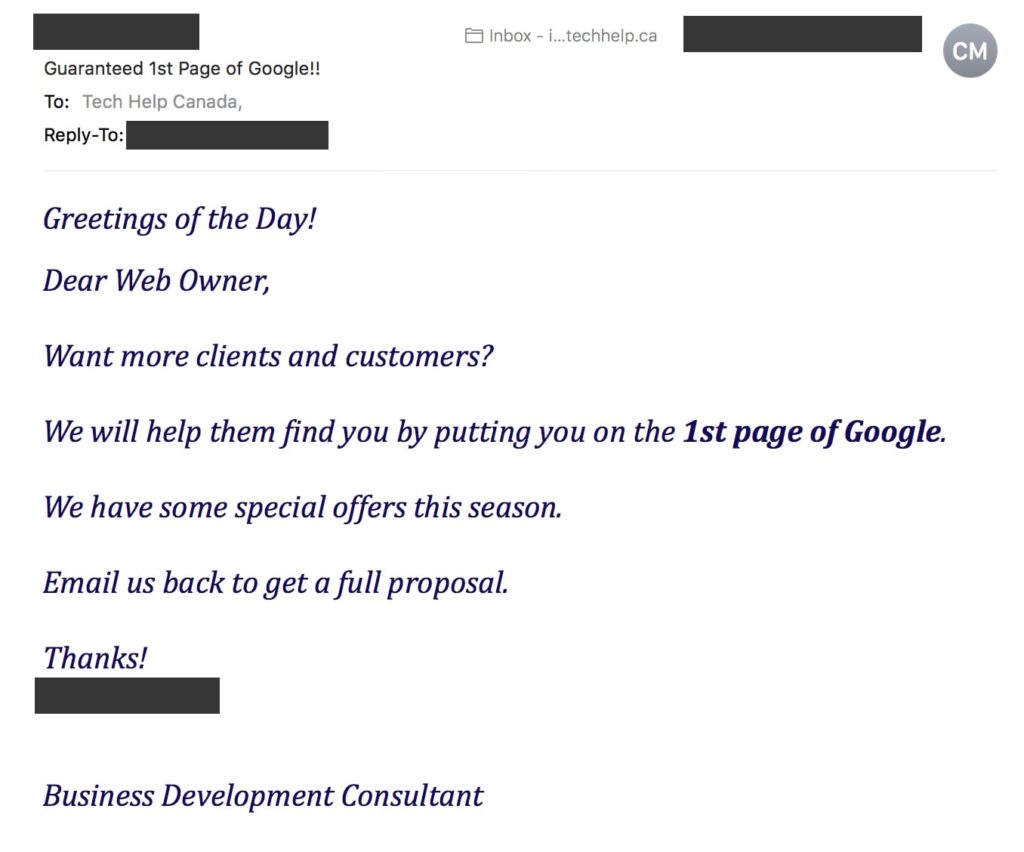When you glance at a company’s logo, what’s the first thing that catches your eye? More often than not, it’s the color. And among the wide range of colors used in branding, blue stands out as a popular choice for many renowned corporations. But why a blue logo? Why does this cool, calming shade hold such appeal in the business world?
Blue isn’t just a pretty color. It’s a powerful tool that companies use to convey specific messages about their brand. Blue logos are everywhere, from tech giants to financial institutions, each telling a unique story about the company behind it.
Why the Color Blue?
Color psychology plays a big role in how we perceive and respond to colors. The color blue is often associated with feelings of calm, trust, and reliability, making it a popular choice for many companies when designing their logos.
Trust and Dependability
Blue is known to evoke a sense of trust and dependability, so it’s no surprise that many financial institutions and tech companies use blue in their logos. They want to show their customers that they are reliable and can be trusted with their money and personal information.
Calm and Serenity
The color blue also has a calming effect on people. It reminds us of the sky and the ocean, both of which are vast and peaceful. This can make customers feel more relaxed and comfortable when interacting with a brand. For businesses, this means customers are more likely to have positive experiences and build strong relationships with their brand.
Professionalism and Strength
Blue is often seen as a strong, professional color. It can convey a sense of authority and seriousness without being too aggressive. This balance makes it perfect for companies that want to appear both strong and approachable.
Universal Appeal
One reason blue is so widely used is its universal appeal. Across different cultures, blue is often seen as a positive and non-threatening color. This makes it a safe and effective choice for companies that have a global presence or aim to reach a diverse audience.
Examples of Companies That Use a Blue Logo
Let’s take a closer look at 30 companies that use blue in their logos. Note that we won’t share their logo designs or images directly here to avoid potentially violating any company’s brand guidelines.
1. Facebook
When you think of Facebook, that iconic blue immediately comes to mind. The company chose a deep, vibrant blue for its logo and overall branding. This shade represents trust, reliability, and open communication – all key values for a social networking platform.
Facebook’s use of blue has become so synonymous with the brand that it’s hard to imagine it any other way. The color choice has played a significant role in establishing Facebook’s identity as a stable and trustworthy platform in the ever-changing world of social media.
2. Twitter (before it became X)
Twitter’s simple blue bird logo was one of the most recognizable symbols in social media. The light, sky-blue color used in the Twitter bird and wordmark evoked feelings of freedom, openness, and accessibility. These qualities aligned perfectly with Twitter’s mission of providing a platform for free expression and real-time information sharing.
The blue bird became so iconic that Twitter often used it without the accompanying text, demonstrating the power of this blue-centric branding
3. LinkedIn
LinkedIn needed a color that conveyed professionalism and trustworthiness as a professional networking platform—enter the deep, royal blue used in its logo. This shade of blue suggests stability, confidence, and intelligence – all qualities professionals aim to project.
LinkedIn’s use of blue in its logo and throughout its platform has helped establish it as a serious, reliable tool for career development and business networking.
4. IBM
With its bold, horizontally striped letters in a deep blue, IBM’s logo is a classic example of corporate branding. Although the company has started using the color black with the same design lately, it has used blue since 1972, making its logo one of the longest-standing blue corporate identities.
IBM’s choice of blue represents reliability, stability, and innovation—crucial qualities for a technology company. Over the decades, IBM’s consistency in using this color has helped it maintain its image as a trustworthy and forward-thinking tech giant.
5. Ford
Ford’s blue oval logo is instantly recognizable to car enthusiasts and casual observers alike. The company uses a deep, royal blue that conveys strength, excellence, and durability—all qualities you’d want in a vehicle, right?
Ford’s use of blue in its logo has been a constant since the early 20th century, helping to establish it as a reliable and long-standing automotive brand. The blue oval has become so iconic that it can be used without the Ford name, showing the power of this simple yet effective blue logo.
6. Dell
Dell’s logo features a unique shade of blue, often described as “Dell Blue.” This color sits between navy and royal blue, projecting an image of reliability and innovation. For a technology company like Dell, these are crucial qualities to convey.
The use of this distinctive blue has helped Dell stand out in the crowded computer hardware market. It’s become integral to the brand’s identity, representing Dell’s commitment to providing dependable and cutting-edge technology solutions.
7. HP
Hewlett-Packard, or HP, uses a vibrant shade of blue in its simple yet effective logo. This bright blue conveys a sense of energy and innovation, perfectly aligned with HP’s position as a leader in the tech industry.
The logo’s simplicity, with just the letters “HP” in a circle, allows the blue to take center stage. This color choice has helped HP maintain its image as a forward-thinking and reliable technology company, even as it has evolved and adapted over the years.
8. Intel
Intel’s logo has become synonymous with computer processors. The company’s choice of blue represents stability, reliability, and intelligence – all crucial qualities for a company at the forefront of computer chip technology.
Intel’s consistent use of blue in its branding has helped reinforce its position as a trusted and innovative leader in the tech industry. The blue logo has become so recognizable that it’s often featured prominently on computers and laptops, serving as a seal of quality.
9. GE (General Electric)
General Electric’s logo, with its distinctive cursive letters in a deep blue circle, is one of the world’s oldest and most recognizable corporate logos. The company’s use of blue represents reliability, long-term stability, and trust – essential qualities for a company with diverse products and services.
GE’s blue logo has remained unchanged for over a century, demonstrating the enduring power of effective blue branding.
10. Pepsi
Pepsi’s logo has evolved over the years, but blue has always been a key component. The current design features a unique globe shape with red, white, and blue elements.
The use of blue in the Pepsi logo represents coolness, refreshment, and youthfulness. This aligns perfectly with Pepsi’s brand image as a fun, modern alternative in the cola market. The distinctive use of blue has helped Pepsi differentiate itself from its main competitor, Coca-Cola, and establish a strong, recognizable brand identity.
11. Visa
As a financial services company, Visa needs to project an image of trust and security. Its logo, featuring a deep blue background with white lettering, does just that. The blue in Visa’s logo represents reliability, security, and stability – all crucial qualities for a company handling financial transactions.
This use of blue has helped Visa establish itself as a trusted name in electronic payments, with its logo recognized and accepted worldwide.
12. Samsung
Samsung’s logo has gone through several iterations, but blue has remained a constant element. The current logo features the company name in a simple, clean typeface colored in a deep blue. This shade conveys reliability, innovation, and trustworthiness—key attributes for a technology company.
Samsung’s use of blue in its logo has helped it establish a strong brand identity in the competitive consumer electronics market, projecting an image of quality and technological advancement.
13. American Express
American Express, often known as Amex, uses a deep blue in its logo that has become synonymous with luxury and exclusivity in the financial world. The blue square with white lettering is simple yet powerful, conveying trust, professionalism, and prestige.
This use of blue has been instrumental in positioning American Express as a premium brand in the credit card and financial services industry. The blue logo has become so recognizable that it’s often used alone on storefronts and advertisements without the full company name.
14. PayPal
PayPal’s logo features two shades of blue, creating a modern and dynamic look. The lighter blue represents creativity and freedom, while the darker blue conveys trust and security.
This combination perfectly encapsulates PayPal’s brand identity as an innovative yet reliable online payment system. The use of blue in PayPal’s logo has helped establish it as a trustworthy platform in the often uncertain world of online transactions.
15. Walmart
Walmart’s logo has evolved, but blue has remained a constant element. The current logo features the company name in a bold, friendly font, followed by a yellow sunburst, all on a light blue background.
This use of blue represents trust, reliability, and value – key attributes for a retail giant. Walmart’s blue branding has helped it maintain its image as a dependable, everyday, low-price retailer, appealing to a wide range of consumers.
16. Boeing
As an aerospace company, Boeing needs to project an image of reliability, safety, and innovation. Its logo, featuring the company name in a deep blue, does just that.
The choice of blue represents the sky, hinting at Boeing’s aviation focus while also conveying trust and stability. This use of blue has been crucial in establishing Boeing’s brand identity in the aerospace industry, where safety and reliability are paramount.
17. Allianz
Allianz, a global financial services company, uses a distinctive turquoise blue in its logo. This unique shade sets Allianz apart from other financial institutions while still conveying trust and reliability.
The blue is paired with a simple, modern font and a three-dimensional cube symbol, creating a logo that feels both established and forward-thinking. This use of blue has helped Allianz build a strong global brand in the insurance and asset management sectors.
18. Oral-B
Oral-B’s logo features a deep blue representing cleanliness, freshness, and health – all essential qualities for a dental care brand. The blue is paired with white, further emphasizing the idea of cleanliness.
This color choice has helped Oral-B establish itself as a trusted name in oral hygiene. The blue logo is instantly recognizable in the dental care aisle of stores worldwide.
19. Unilever
Unilever’s logo is unique. It features a U made up of various symbols in different shades of blue. This creative use of blue represents the company’s diverse range of products and its commitment to sustainability.
The varying shades of blue convey depth and variety while maintaining an overall sense of trustworthiness and reliability. This innovative logo design has helped Unilever stand out in the crowded consumer goods market.
20. Tiffany & Co.
Few brands are as closely associated with a specific shade of blue as Tiffany & Co. The iconic “Tiffany Blue” is a light medium robin egg blue that the company has used since 1845.
This distinctive color represents luxury, exclusivity, and timeless elegance. Tiffany’s branding strategy has been based on this unique blue, and the color alone is often enough to evoke the brand in consumers’ minds. This is a prime example of how a specific shade of blue can become an integral part of a brand’s identity.
21. Volkswagen
Volkswagen’s logo, a simple V over W enclosed in a circle, has been a constant in the automotive world for decades. The company typically renders this logo in a deep, royal blue when color is used.
This shade of blue represents reliability, excellence, and precision in German engineering. The use of blue in Volkswagen’s logo has helped reinforce the brand’s image as a maker of dependable, high-quality vehicles.
22. Skype
Skype’s logo features a light, cheerful blue that perfectly represents the brand’s mission of connecting people. The bubbly, cloud-like shape of the logo further emphasizes ideas of communication and connectivity.
This use of blue has helped Skype establish itself as a friendly, accessible communication tool, setting it apart in the competitive world of online communication platforms.
23. NASA
NASA’s logo, often referred to as the “meatball,” features a deep blue background with red accents. The blue represents the Earth’s oceans and atmosphere, as well as the vastness of space.
For an organization focused on space exploration, this use of blue helps convey ideas of discovery, science, and the unknown. NASA’s iconic blue logo has become synonymous with space exploration and scientific advancement.
24. General Motors
General Motors (GM) uses a deep, corporate blue in its logo. The current design features the letters GM in lowercase within a square with rounded corners, all in this signature blue.
This color choice represents reliability, longevity, and trust—all crucial qualities for an automotive manufacturer. The use of blue in GM’s logo has helped the company maintain its image as a stable, dependable force in the industry, even as it adapts to changing markets and technologies.
25. Pfizer
As a pharmaceutical company, Pfizer needs to project an image of trust, reliability, and health. Its logo, featuring the company name in a unique, pill-like oval shape, is rendered in a calming shade of blue. This color choice helps convey ideas of medical expertise and care.
Pfizer’s use of blue in its branding has been particularly important in recent years. The company was at the forefront of COVID-19 vaccine development, and its blue logo has become a symbol of hope and scientific progress.
26. AT&T
AT&T’s logo, featuring a stylized globe made of blue and white stripes, is one of the most recognizable in the telecommunications industry. The use of blue in this logo represents communication, trust, and global connectivity. And the globe shape further emphasizes AT&T’s worldwide reach.
This distinctive blue logo has helped AT&T maintain its position as a leader in the telecommunications field, even as the industry has undergone significant changes.
27. Dropbox
Dropbox’s logo features a simple blue box design that perfectly represents the company’s cloud storage services. The light, clear blue used in the logo conveys ideas of sky and clouds, aligning with the concept of cloud computing.
This use of blue has helped Dropbox establish itself as a reliable, user-friendly option in the competitive field of online storage and file sharing.
28. Chase
Chase bank uses a deep, corporate blue in its logo, which features an abstract octagon shape alongside the Chase name. This shade of blue represents trust, stability, and professionalism – all crucial qualities for a financial institution.
The use of blue in Chase’s logo has helped it maintain a strong brand identity in the banking sector, conveying reliability and security to its customers.
29. Philips
Philips, a company known for its electronics and healthcare technology, uses a deep blue in its shield-shaped logo.
This color choice represents innovation, reliability, and care – all important attributes for a company striving to improve people’s lives through technology. The blue shield has become a recognizable symbol of quality in both consumer electronics and medical equipment markets.
The Power of Blue in Branding
Your choice of colors for your company logo can greatly influence how people see your brand. Blue logos have clearly made a significant impact in the corporate world, helping companies across various industries establish strong, recognizable brand identities.
From the deep, trustworthy blues of financial institutions to the bright, innovative blues of tech companies, this versatile color has proven its worth in logo design. So, using this color in your logo can make your audience feel welcome, secure, and valued.

We empower people to succeed through information and essential services. Do you need help with something? Contact Us.
Want a heads-up once a week whenever a new article drops?







